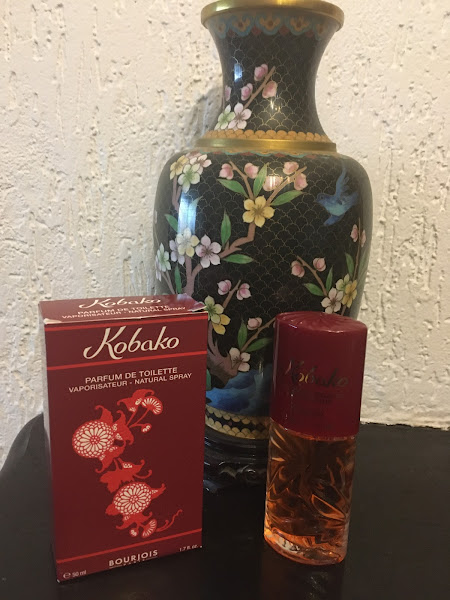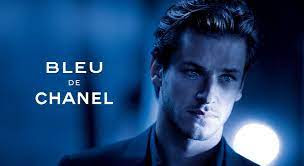The new year opens before us with the world of perfumes reflecting everything that concerns us in the rest of pop culture. From the world of woke to environmental consciousness and artificial intelligence, 2022 is set to be an exciting year.
Let's go examine these tendencies in fragrance for 2022 one by one.
Reclaiming the Name of the Rose
Perfumes with rose work slightly like the classic trench coat in beige gabardine in our closet, or a brit pop song in a department store with youthful products. They brighten the mood with their easy reception even by novices, their purity of intentions, their classicism in structure. This year, creators and companies, mainstream and niche, are reinventing the rose.
Tom Ford leads with 3 suggestions that follow last year's Rose Prick, this time with geographical inspiration: Rose D'Amalfi, Rose de Chine, and Rose de Russie are released in February 2022, before Valentine, as part of the new Tom Ford Private Rose Garden collection. Red and rose and for Armani with the new Sì Passione l'Εclat de Parfum, with the bright Cate Blanchet as the muse of the campaign again. As with Lancôme with La Nuit Trésor Intense L’Eau de Parfum (what a mouthful, have your smartphone at the ready to show to sales assistants).
Digital Anamorphs
When marketing perfume, we often tend to resort to ancient techniques - things that are collected and processed by hand. In the actual industry, however, this is definitely not the case. Fragrances by large and small houses incorporate sophisticated ingredients of human laboratory preparation and advanced industrial sophistication technologies. Headspace was one, a popular technique first used in Antonia's Flowers, that captures the smell of things, and then recreates them in the lab as innovative arrangements.
Nowadays technologies such as artificial intelligence are used to compose perfumes. In 2021 there was even an all-digital fragrance created as a non-exchangeable work (NFT)! The launch of Paco Rabanne Phantom in late 2021, with its cute robot-shaped bottle, let consumers use their smartphone to tap on its head to create a digital experience.
The composition of Paco Rabanne Phantom on the other hand is entirely created by artificial intelligence (AI) and this is going to be used more and more in industrial size perfumery.
Digital interactive bottles and perfumes created entirely from artificial intelligence will continue to pierce our minds and noses. In 2022 and beyond.
More art + perfume go hand in hand
Arpa (sounds like harpe in Greek…) is a new multi-platform brand by perfumer Barnabé Fillion. It combines aroma, music, architecture and images in a complete experience of all the senses. Coupling that is becoming an increasingly strong trend. In November 2021, Arpa was officially released at the Dover Street Parfums Market and the final collection did not disappoint our high expectations.
At Arpa, Fillion reunites with many of its former partners, drawing on different talents to create accompanying pieces for the brand's perfumes. These include a series of sculptures and records that are combined with scents, such as Anicka Yi and the French DJ Pilooski. The graphics were designed by the heavyweight Nathalie du Pasquier of the Memphis Group, while an office space was designed by the architect of the Australian firm Aesop, Jean-Philippe Bonnefoi. Meanwhile, limited edition bottles have been hand-crafted by glassmaker Jochen Holz.
Chinese Tips for Chanel
As part of its approach to China's always-aimed-at market, this dormant luxury consumer giant, Chanel with a distinctive eco-friendly approach creates recyclable, bio-sustainable products in a new line of cosmetics, makeup and grooming products called Chanel No.1
The collection with the camellia logo bears the symbol of the flower in red, just in anticipation of the Chinese New Year (the so-called Lunar Year) and with the expected lightness in the fragrances. For Chanel No.1 L'Eau Rouge, perfumer Olivier Polge explained: "This aromatic spray with a composition of 97% natural ingredients, can be used in combination with another product of the house or alone".
The composition ends with a drying down of iris and clean musks for a slightly powdery feeling of cleanliness.
Hot air? Not exactly.
This is not the first time that pure air has been packaged in bottles for consumers with a sense of humor. The Air de Montcuq was a first attempt: Montcuq is a French village, but the headphones bring a bit of "air from our butt" - the smell happily reminiscent of ethereal mountain scenery and freshness.
Air Eau de Parfum by The Air Company is a sexless fragrance composed of carbon dioxide, which binds at its source. To do this, the brand produces hydrogen which is fed to the patented carbon conversion reactor along with CO2. The resulting reaction converts hydrogen and CO2 into ethanol, methanol and impurity-free water, which form the body of the perfume. Then, the Air Eau de Parfum preparation ends with light aromatic notes, such as orange peel, jasmine, violet and tobacco - so as not to deviate from the aromatic parameter.
Eco-consciousness will flourish
Starting with Rochas and their Rochas Girl, lots of companies, not only Chanel above, put an emphasis on eco-consciousness, sustainability and green imprint.
Fashion brand Chloé has even issued a sort of manifesto on their website. "We intend to become a force for positive change beyond the Chloé workplace by working with our main suppliers to promote and further our standards while ensuring transparency. Based on our environmental impact research, we learned that our biggest impact comes from raw materials. This has prompted us to work with external experts to identify lower impact materials. We are focused on increasing their proportion such that we can reach 90% by 2025 at the latest. Consequently, this will contribute to our target of reducing emissions by 25% per product."
This is reflected in both their Chloé Eau de Parfum Naturelle and their newest, just launched Nomade Eau de Parfum Naturelle, fronted by Naomi Scott.
We will continue to see this trend gaining momentum throughout 2022 and beyond.
.jpg)












.jpg)



